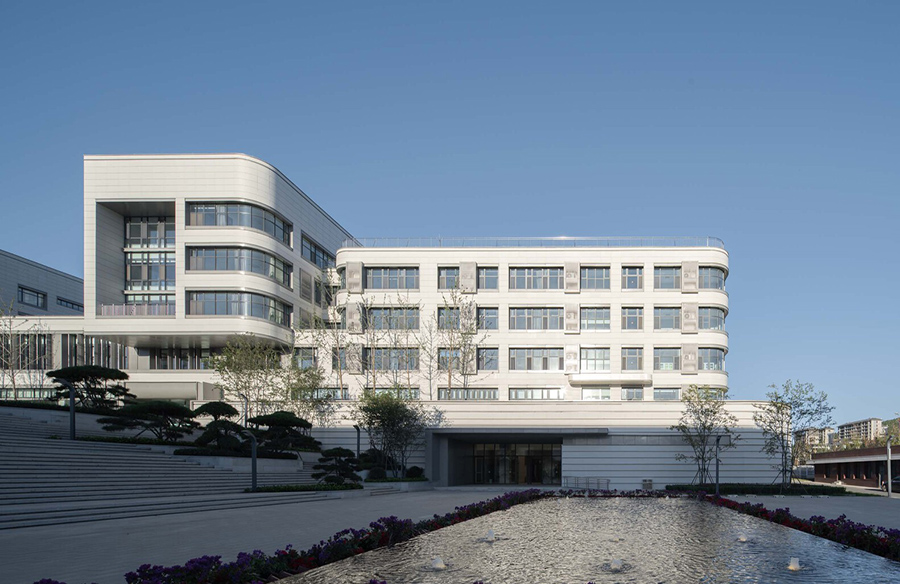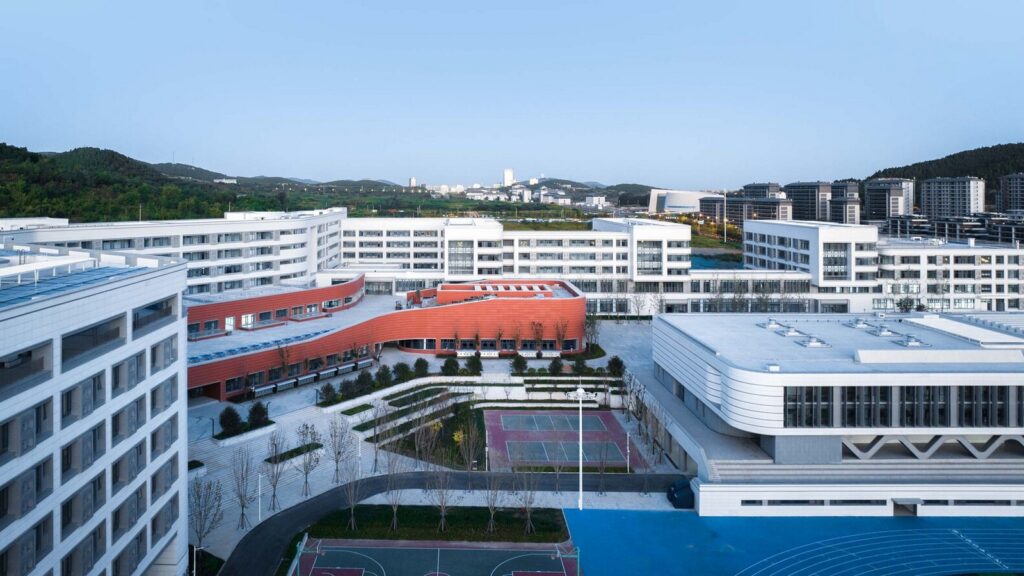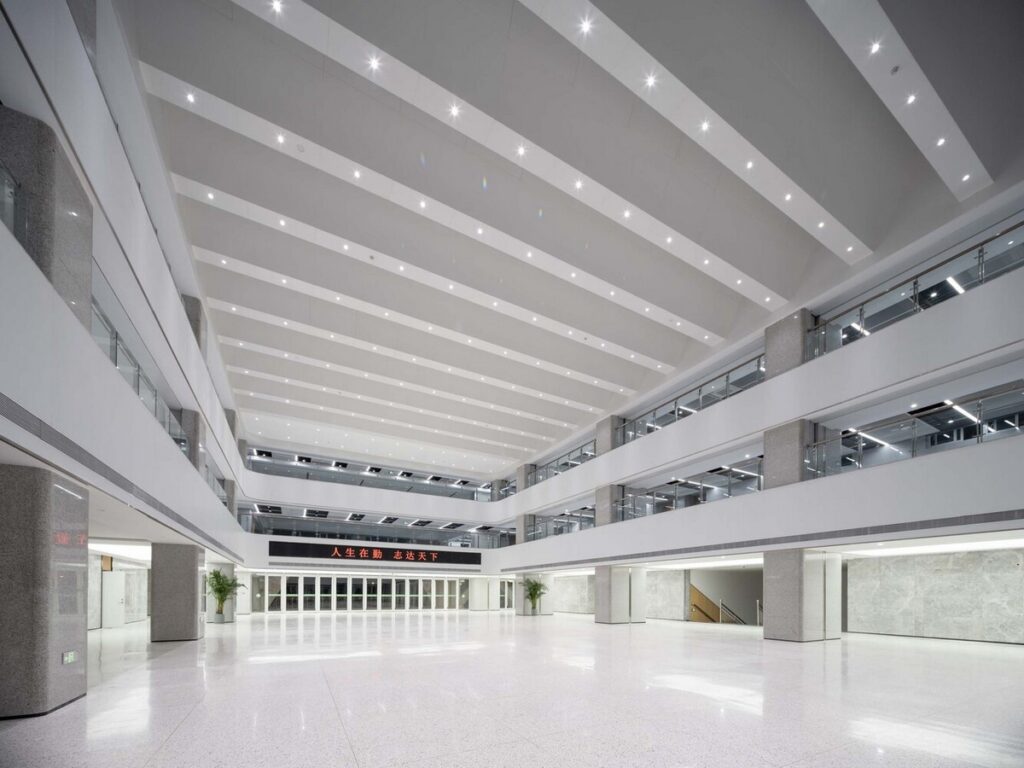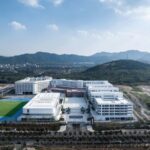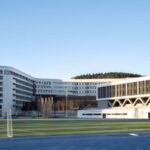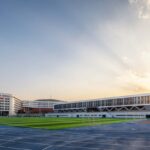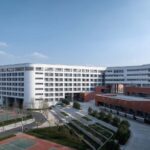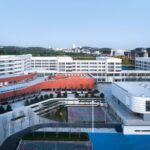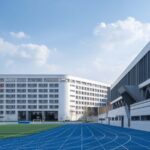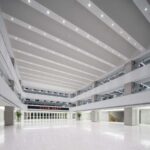Introduction
Established in 1958, Jinan Licheng No. 2 Middle School has evolved into a prominent educational institution amidst China’s socioeconomic advancements. The Caishi campus, situated at the foot of Hu Mountain, exemplifies a commitment to sustainable design principles, blending seamlessly with its natural surroundings.
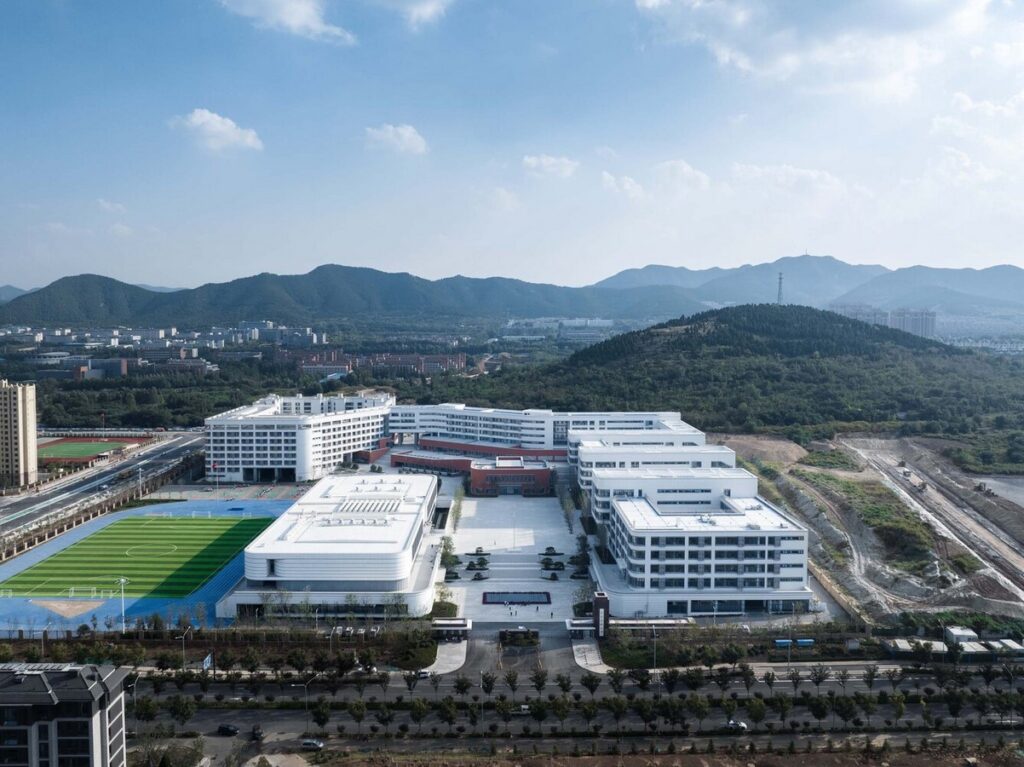
Pathway to Low-Tech Implementation
Planning for the Caishi campus commenced in early 2020, driven by a vision to create a green and low-tech environment integrated with nature. With a building volume of 120,000 square meters, the project aimed to optimize spatial patterns and reduce environmental impact through strategic layout and construction techniques.
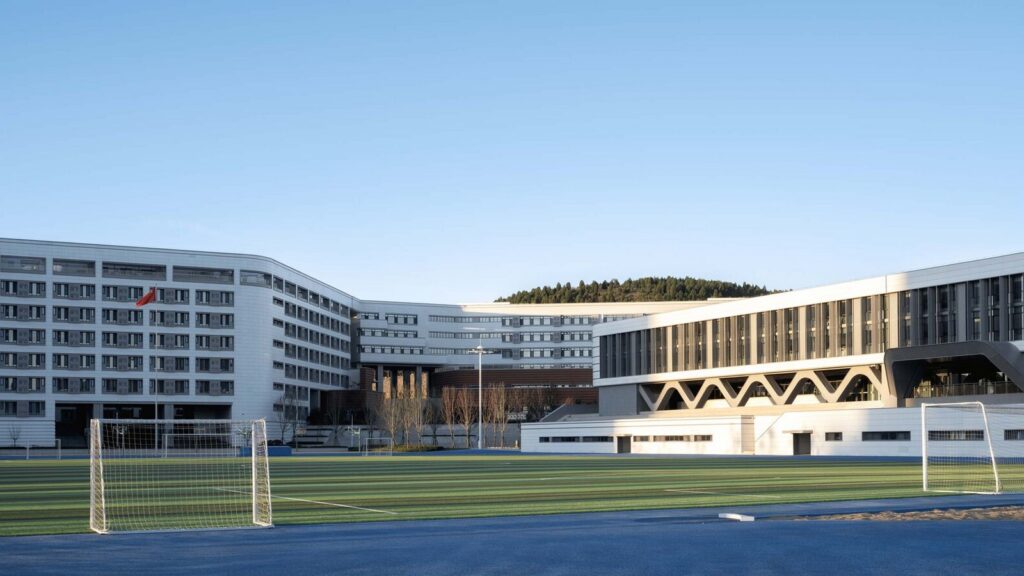
Pattern and Concealment
The architectural design prioritizes harmony with nature, employing a technique of “cover, retreat, hide, and give way” to blend the structures with the mountainous landscape. By organizing building layouts along contour lines and embedding structures into the earth, the campus minimizes its visual impact while maximizing sustainability.
Adaptation and Skeleton
Anticipating future educational needs, the campus design emphasizes adaptability and versatility. Shared facilities are strategically placed at the core of the layout, facilitating easy access for students and optimizing space utilization. The flexible design allows for seamless transitions between different functions, promoting sustainability and efficiency.
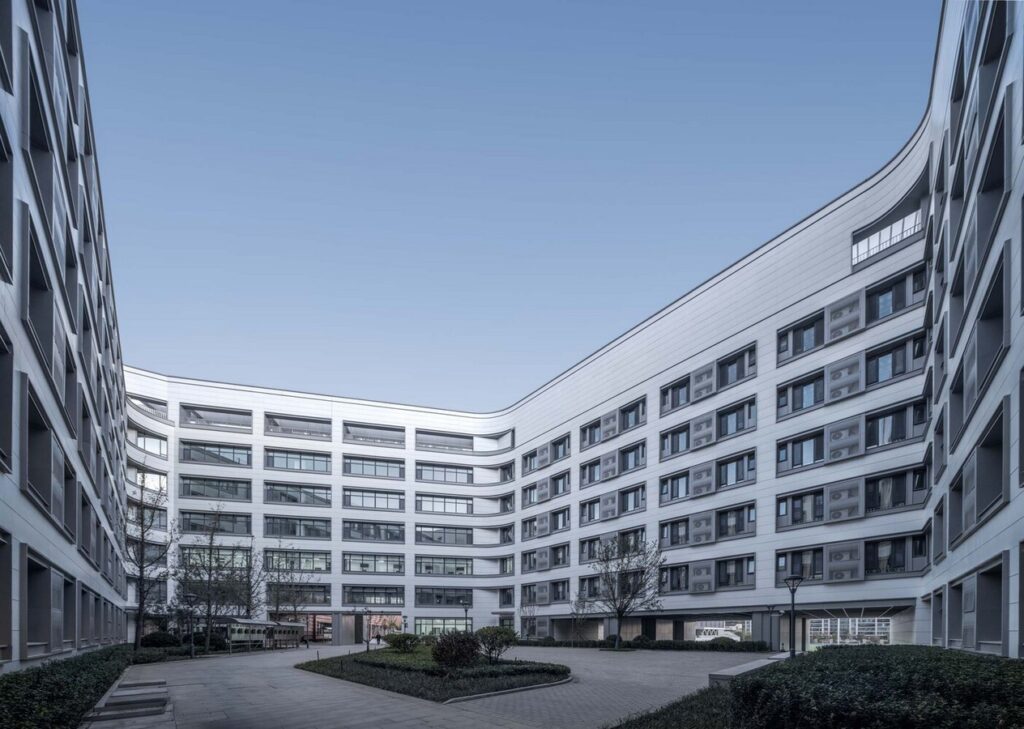
Form and Construction
The campus employs passive technology and sustainable materials to minimize energy consumption and maximize environmental performance. High-performance teaching spaces are positioned to optimize solar exposure, while clay facades and solar panels contribute to energy efficiency and renewable energy utilization.
Conclusion
The Caishi Campus of Jinan Licheng No. 2 Middle School embodies a holistic approach to sustainable design, integrating environmental consciousness with educational excellence. By prioritizing low-tech solutions, adaptive layouts, and eco-friendly materials, the campus sets a precedent for environmentally responsible architecture in the education sector, fostering a culture of sustainability and environmental stewardship among students and society at large.


